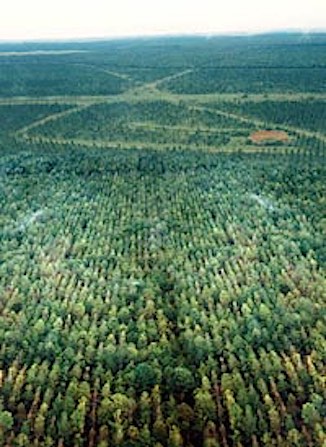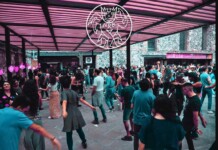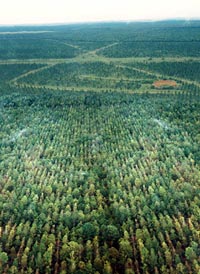 EARTH DAY SPECIAL — Imagine miles and miles of desolate savannah in South America, without a tree or bird in sight, a veritable no-man’s land. For Paolo Lugari, this was the perfect place to implement a vision — and prove a point: if a sustainable community could be created in such adverse environmental, social and political conditions as Eastern Colombia, it could be done anywhere on the planet.
EARTH DAY SPECIAL — Imagine miles and miles of desolate savannah in South America, without a tree or bird in sight, a veritable no-man’s land. For Paolo Lugari, this was the perfect place to implement a vision — and prove a point: if a sustainable community could be created in such adverse environmental, social and political conditions as Eastern Colombia, it could be done anywhere on the planet.
“Paolo, a young man who was home schooled by his father, imagined that this desolate region where he spotted a seagull far from any coast, could one day become an inspiration for sustainable development.”
By 1992, at his environmental research center, Las Gaviotas (The Seagull), Paulo had finished planting 8,000 Hectares (30 sq-miles) of Caribbean pine trees in a place that had been unproductive for centuries. The rebirth of a rainforest in soil so acidic and inhospitable as to measure a pH of 4, was considered impossible by experts in academia, but thanks to the innovative use of mycorrhizal fungi, which acts as the saliva for the tree, the forestation was successful.
Yes indeed, to everyone’s surprise, the symbiosis between the pine tree and the mycorrhizal fungus not only permitted the treelings to survive the harsh conditions, but as soon as the young pine offered shade, and the pH turned less acidic, a completely new forest emerged. Conditions were created to permit the natural tropical ecosystem to retake its natural course, resulting in the arrival of over 250 tropical plant species. The original hypothesis has become a thesis: this ‘dead’ zone is a natural rainforest waiting to re-emerge.
CHECK OUT: Farmer Returns 700 Acres of California Coast to Native American Tribe
By 2004, more than a decade later, the forestation had resulted in 10 percent more precipitation, converting Las Gaviotas into a net supplier of drinking water, which fetches more money than even petroleum. The choice of the Caribbean pine tree provided another economic impulse. The 7 to 14 grams of resin a day produced by the tree is locally converted to a raw material for the paint and paper industry bringing industrial activities to the region. Palm trees are planted to provide a permanent supply of vegetable oil, which is rather easily converted into biodiesel fuel for machinery.
RELATED: ‘Water Gandhi’ of India Turns Dust Bowls Into Lush Villages Using Ancient Ways
In the course of Paolo Lugari rewriting the science of forestry, he created a self-sustaining community of 200 full-time workers, independent of donor money. It is a center of creativity, where innovations are conceived by following nature’s example. Currently Lugari is expanding and hopes to reforest the entire 6.3 million hectares of savannah (twice the size of Belgium) that surrounds Las Gaviotas.
The $6 billion required should be easily won as it would be a winning proposition for potential investors and the people of Colombia: The economic power of drinking water (thanks to the forest), hydroponic food crops (thanks to the abundance of water), and biodiesel (from the forest) can provide natural revenue streams potentially creating 120,000 new jobs, securing a local source of drinking water, eliminating the need to import diesel fuel and reducing Columbia’s foreign debt.
Thank you to Gunter Pauli, founder of ZERI, who wrote a pair of inspiring articles that were edited with permission into this story, and for spearheading efforts to champion Las Graviotas until it reached the realm of mega-project with such potential to benefit Colombia and the world. Read about his involvement and more remarkable details of Las Gaviotas at ZERI.org (Zero Emissions Research and Initiatives)




















